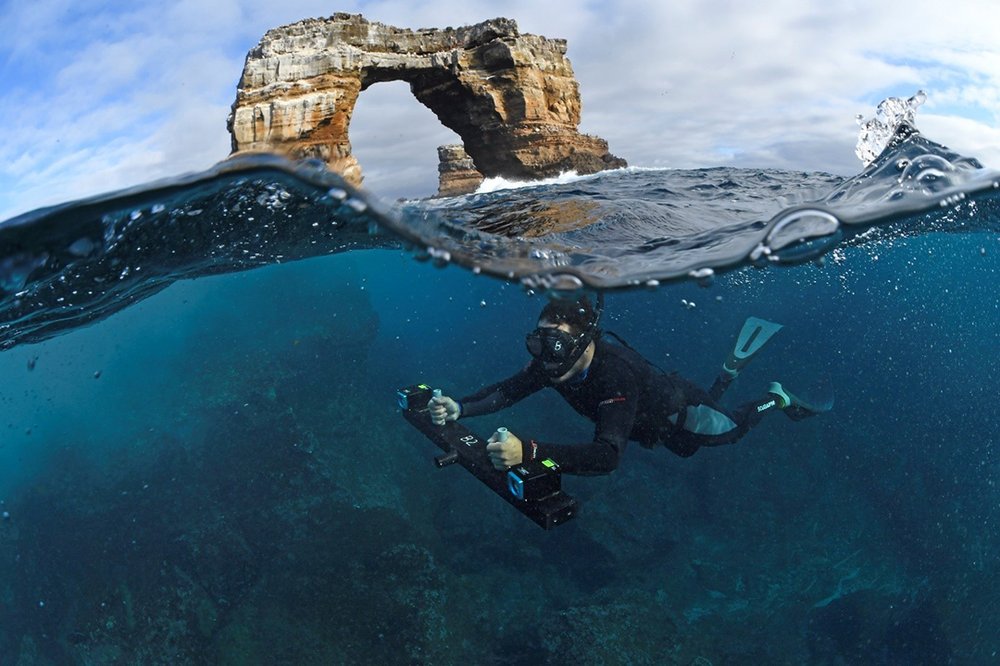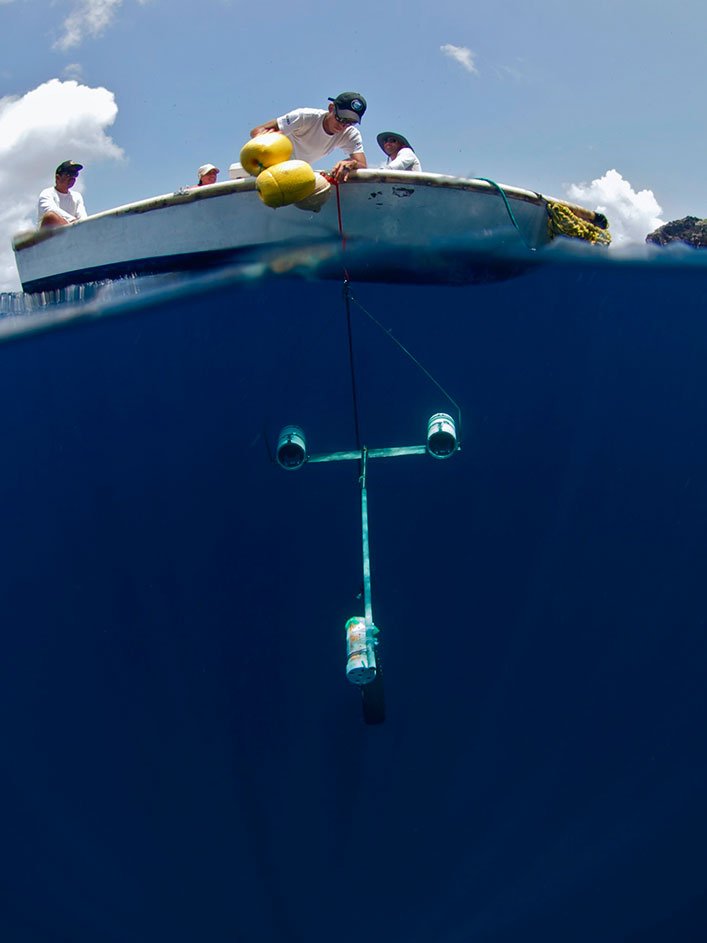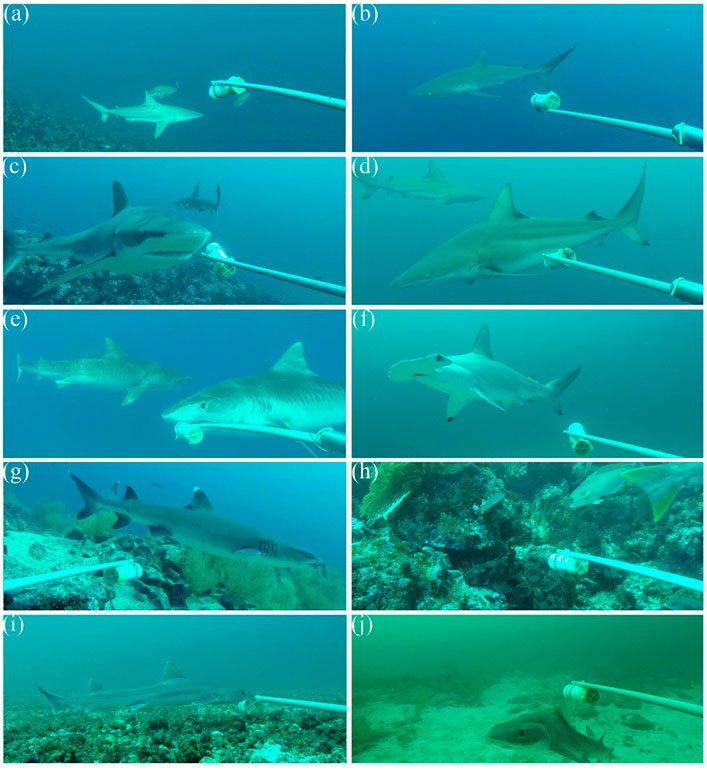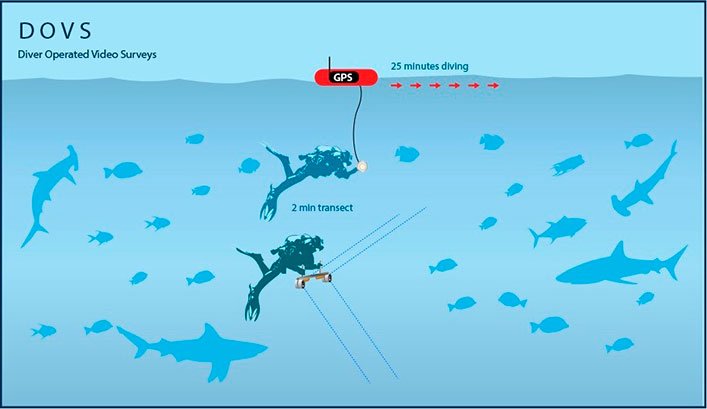
Written in collaboration with: Pelayo Salinas de León.
Since 2013, the Charles Darwin Research Station’s shark team, in collaboration with the Galapagos National Park Directorate, have conducted three annual trips to Darwin and Wolf to study sharks: one during the warm season, another during the cold season and another during the transition season. The aim of this study is to determine the impact of the El Niño / La Niña cycles and the effect of the total protection from fishing provided by the Marine Sanctuary established in 2016 on the main species of sharks and predatory fish.

Two underwater camera systems are used by our scientists:
- Stereo-BRUVs (Baited Remote Underwater Video Surveys), which are remote cameras mounted on a triangular metal structure, to which a canister with bait is attached so that the odor attracts sharks.
- Stereo-DOVs (Diver-Operated Video Surveys), which are also cameras don’t have a bait canister, and are carried by a scuba diving scientist.
Both methodologies consist of two cameras placed in the lower corners of a steel base with a distance of 70 cm between them, and at a converging angle of 6 cm. The cameras film in high definition and allow scientist to record different species of sharks and fish. Because they record in stereo (as in 3D), by using a specialized software called Event Measure, scientists can measure the length of animals very precisely. This is vital to understand the distribution of juvenile and adult sharks in the archipelago, as well as their diversity and relative abundance. The cameras are calibrated in a pool before each field trip to ensure their accuracy.

There are two types of BRUVs: A bottom BRUVs that is placed at a depth of 25 meters (close to the seabed) and the mid-water BRUVs, which is placed in the middle of the water column, about 15 meters from the seabed. On one of the rope ends, a weight is attached to keep the cameras in position. A set of buoys are attached on top of the triangle that holds the cameras to keep it at the desired depth. An additional two buoys are attached to the other end of the rope on the surface, to be able to locate and recover the cameras after an hour and a half of filming.

Contrary to what most people think, sharks are usually very shy, and when scuba divers are in the water, many species simply do not come into sight. However, these species can be recorded by using remote cameras with bait and without divers. When the bait is in a closed container, sharks can smell but not eat, so their behavior is not altered. In a recent study published in the Marine Ecology Progress Series international journal by scientists from CDF, Massey University in New Zealand, and Curtin University in Australia, the results from 629 stereo-BRUVs conducted in the Galapagos Marine Reserve were presented. A total of 877 sharks were recorded from 10 different species, most prominently including hammerheads, black tip and Galapagos sharks. Some species that were frequently recorded by the BRUVs, such as the tiger shark or hound shark, are very rarely seen by scuba divers in the Galapagos. The data obtained in Galapagos will also contribute to the Global Fin Print project, which aims to conduct the first global shark census using BRUVs.







